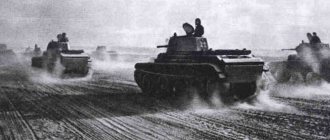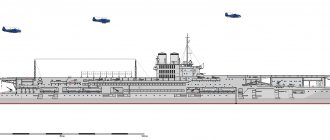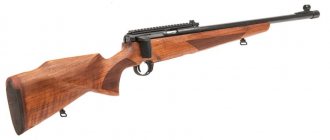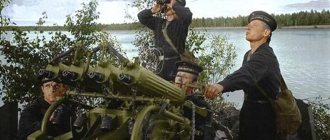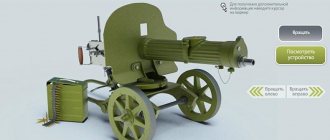About battleships. Russian and Soviet. And just a little about the prospects
I’ll say right away that the conversation here is not about comparing the tactical classes of large ships. And not about the advisability of using battleships tomorrow. We will talk about completely different things.
We will talk about the industry of two countries (Russia and the USSR) and everything connected with it. And in the end, some pretty funny conclusions.
From gentlemen “crystal bakers” you can very often hear such an argument in favor of how developed “that” Russia was. Battleships. Battleships, whose place today is taken by aircraft carriers. A certain standard showing how developed a country is, whether it can afford to build and maintain this class of ships.
So, imperial Russia, which built 7 battleships, in the opinion of many, was significantly ahead of the Soviet Union, which was unable to launch a single one in 70 years. I agree with the numbers 7 and 0. But the nuances were lost in droves. And these nuances say completely the opposite.
So, the Russian Empire in the period from 1909 to 1914. built 7 battleships. The Sevastopol type (4 units) was built at Baltiysky (3 units) - in Nikolaev. Battleships were built and commissioned.
Can these ships be considered evidence of the power of the state? To be honest - not really.
The battleships, to put it mildly, did not shine with the novelty of the project. Yes, there were interesting new items, such as, for example, the designs of the main battery towers of the “imperial” series, to the creation of which A. N. Krylov had a hand and a hand. But in fact, the ships were frankly weak, both in terms of armament and seaworthiness.
For comparison, we can put their peers next to the Russian ships: the Japanese Fuso and the British Royal Sovereign.
"Sevastopol"
"Empress Maria"
"Royal Sovereign"
"Fuso"
Speed: "Sevastopol" - 24 knots. "Empress Maria" - 21 knots. "Royal Sovereign" - 21 knots. "Fuso" - 24 knots.
Maximum armor (main belt/tower/wheelhouse), mm:
"Sevastopol" - 225/203/250. "Empress Maria" - 262/250/300. "Royal Sovereign" - 330/330/279. "Fuso" - 305/305/350.
Main caliber (caliber/quantity/firing range, km):
"Sevastopol" - 305/12/29. "Empress Maria" - 305/12/29. Royal Sovereign - 381/8/29. "Fuso" - 356/12/22.
Auxiliary caliber (caliber/quantity/firing range, km):
"Sevastopol" - 120/16/15. "Empress Maria" - 130/20/20. Royal Sovereign - 152/14/20. "Fuso" - 152/14/20.
Obviously, if the Russian battleships were not inferior in speed (all ships of that time were equipped with Yarrow boilers and Parsons turbines), then in terms of armament they did not look like something so modern.
By the way, it is worth noting that if the construction of Russian dreadnoughts of the Sevastopol and Empress Maria class took an average of 4-5 years, then the next, more promising class (Izmail), which could really become a powerful argument in the military plan, it was not possible to build. From 1912 to 1917 The hulls were ready and launched, and the Izmail had the highest degree of readiness - just over 50%.
But that's not the point. The point is that while the Baltic and Nikolaevsky factories were building battleships, half of the world's shipbuilders were making money by building everything else at their shipyards for the Russian fleet. Russia’s order for the construction of a ship from a foreign shipyard was an absolutely ordinary matter. Examples?
Battleship "Retvizan" - Philadelphia, USA. Battleship "Tsesarevich" - La Seyne-sur-Mer, France. Cruiser "Svetlana" - Le Havre, France. Cruiser "Admiral Kornilov" - Saint-Nazaire, France. Cruiser "Rurik" - Barrow Inn Furness, England. Cruiser "Askold" - Kiel, Germany. Cruiser "Boyarin" - Copenhagen, Denmark. Cruiser "Bayan" - Toulon, France. Cruiser "Admiral Makarov" - Le Havre, France. Cruiser "Varyag" - Philadelphia, USA. (By the way, the gunboat “Korean” was built in Sweden.)
Destroyers of the "Whale" series ("Vigilant", "Kasatka"), 4 ships - Elbing, Germany. Destroyer series "Trout" (5 ships) - Le Havre, France. Destroyers of the "Lieutenant Burakov" series (11 ships) - Le Havre, France. Destroyers of the Mechanical Engineer Zverev series (10 ships) - Schichau shipyard, Germany.
The list can be continued for quite a long time. English, French, and German shipyards worked conscientiously for full gold Russian rubles. The fact is undeniable and immutable.
Yes, we designed and built it ourselves. And it's not always bad. Here, as an example, we can cite the Novik destroyers - wonderful ships that became the standard for many shipbuilders and showed themselves very worthy during the Great Patriotic War. And the battleships carried away by Tsushima were also mostly domestically built.
But I got a little distracted. We're talking about battleships...
But the battleships were built. The fact that they were not the strongest is understandable.
It remains to state the fact that the attempt of the Russian Empire to become a maritime power in terms of battleships failed. And first of all, because of the underdeveloped industry. The second is because of corruption and theft, but that’s a different story.
What's next? And then there was the Soviet Union. Who could not build a single battleship.
Although they wanted to, yes. In the Soviet Union they really started building battleships. And it seems (on paper) that the Project 23 battleships (“Soviet Union”, “Soviet Ukraine”, “Soviet Belarus”) were quite modern ships. But, I repeat, on paper.
Yes, the war prevented the completion of the battleships laid down in 1938. But the backwardness of domestic industry also played a role. The “Soviet Union” (and its sisterships) turned out to be beyond the capabilities of our shipbuilding industry, as evidenced by the low percentage of readiness at the start of the war. The readiness of the “Soviet Union” was 19.44%, “Soviet Ukraine” - 7%, “Soviet Belarus” and even less - 1%.
Failed? Yes, we couldn't. Another question: was it necessary?
Undoubtedly, if the “Soviet Union” had ended up in the Northern Fleet at the beginning of the war, it would have been able to have a real impact on the Germans, who were rampant in those latitudes. However, how likely was the chance for a ship, only slightly smaller in size than the Yamato, to pass from the Baltic to the northern seas in war conditions?
However, this is all theory.
Another question: did the Soviet Union buy and build ships abroad?
I bought it. Where was there to go? But HOW - that is the question. Yes, the leader “Tashkent” was built in Italy according to our order. Yes, we bought “Luttsov” from the Germans.
But there is a huge “but” here. First of all, the Soviet Union bought technology and drawings. Stalin did not spare money for this, so they bought up diesel engines, ship catapults (Heinkel supplied them), drawings of large-caliber ship turrets and the guns themselves, bomb throwers, hydroacoustic equipment, and optics.
And then they tried to build it themselves. Hence the “seven”, who, being Italians, very quickly “Russified” and suffered a lot. Here is the cruiser Kirov, built from scratch according to Italian drawings.
Yes, the Sevens were very controversial ships. Yes, the Kirov was definitely not the best cruiser in the world. But let's look a little further. And then there was a war, and a war with those who supplied us with technology. And from the “allies” nothing seemed to shine for us. Fact? Fact.
And after the end of World War II, the Cold War immediately began. Against everyone at once, both enemies and allies.
This is where the acquired and hard-won ability to make candy out of shit played its role. It is easy to trace the evolution from the useless Carden-Lloyd wedge and the same Christie tank to the T-34.
So in maritime matters, the Soviet Union could only rely on itself. Agree, it is difficult to imagine the construction of “Peter the Great” or “Boreas” somewhere in England or France in those days. And even in warmer times it doesn’t work out very well. The Russian experiment with the Mistrals only confirms this. ABOUT.
But the USSR coped. In the 60s, just 20 years after SUCH a war, maybe not completely, but having restored the economy and industry, we had a fleet. And not just a set of ships, but quite a fleet capable of resisting a potential enemy and even more. And we were the best at many things. Especially underwater.
Yes, we Soviets did not build a single battleship. But they built submarines and aircraft from titanium, aircraft-carrying cruisers, “aircraft carrier killers” - SSGNs and “Orlans”. And much of what was designed by “those who don’t know how to build battleships” is still the basis of the Russian fleet. Alas, no matter how unfortunate it may be for some.
And, I note that everything was created “here”. No one rushed to share technology.
Someone who knows will definitely rub my nose into the fact that ships for the USSR Navy were built in Poland and the GDR. Oh, yes, we also ordered it from Finland. I agree and will not argue. But what were they building? Nuclear powered ships? Missile cruisers? TAVKRs?
They built all sorts of little things: landing ships, rescue ships, tugboats. And they were built mainly for political reasons. Allies in the ATS had to be fed.
Was at least one of the ships of projects 61, 1134A, 1134B, 1155, 1155.1, 56-PLO and 57-A built abroad? I’ll just keep quiet about the big ones. We managed, as they say, on our own. Built.
Unfortunately, today is more and more reminiscent of “those” times. In some ways, some of our figures resemble Grand Duke Alexei Alexandrovich Romanov, brother of Alexander the Third, who stole from the treasury so much that the people rightly awarded him the title “Prince of Tsushima, the most vile admiral general.”
Although it’s not worth blaming everything on Romanov. The entire naval department was busy there.
Are we doing any better today? Yes, in some respects definitely. But it's a long way from Soviet times. This begs a logical thought: won’t the plans to build large attack ships by 2030 result in the same thing that the construction of absolutely useless battleships resulted in for Russia?
It’s possible to build it, we’ll build it. What happens next, however, is vague. An attack aircraft-carrying ship, “not inferior to the world’s best,” is, of course, luxurious. In all senses. The question arises: who and where to hit? “On the distant frontiers”? Fighting for the interests of “partners” and dubious allies? One aviation miracle is at war with us... The whole world is trembling. From sarcasm, really.
Moreover, if all the oil that went into the Admiral Kuznetsov’s furnaces was distilled into kerosene, then our VKS would definitely have enough to turn half of Syria into a desert.
Let me look back into history again. The British had an excellent fleet in the early 40s of the last century. The French had a very good fleet. Did it help them a lot at Dunkirk? Was the sinking of the Bismarck a turning point in the war? You can also remember the Tirpitz. Of course, the ship was good, but not so good as to cause relaxation of the sphincters of all the lords of the Admiralty and the glorious captains of the mighty battleships of the Metropolis.
For some reason I didn’t call Lunin. And one submarine, K-21, did more for the safety of northern convoys than the entire British fleet.
History is an instructive science. Was it worth the Russian Empire, straining with all its might, to build battleships that no one needed? Should modern Russia build aircraft carriers? Were both the first and the second really necessary? Or does it make sense to take a closer look at the experience of the Soviet Union, whose fleet, without battleships and aircraft carriers, nevertheless inspired respect in some and fear in others?
Two revolts of Petropavlovsk
Kronstadt played a special role in the fate of Petropavlovsk. From here he set off in May 1919 to take part in the only naval battle of his career. Moreover, this battle fully justified all the hopes that were once placed on ships of this type. When seven British ships pursuing the Soviet destroyer Azard approached the battleship and it opened fire, the enemy, not accepting the battle, simply turned around and left.
And two weeks later, the battleship’s gunners had to open fire on the Kronstadt forts “Grey Horse” and “Red Hill”, where the Baltic sailors who had rebelled against Soviet power were concentrated. Having been among the first to express allegiance to the Bolsheviks, the sailors of the Petropavlovsk carried out the order received from Petrograd to shoot the rebels. And no one at that moment thought that only two years would pass, and the Petropavlovsk residents themselves would find themselves in the same position, having taken part in the second Kronstadt rebellion.
After its suppression, part of the battleship’s crew managed to escape and get to Finland, from where they almost fought three years ago, while others surrendered to the mercy of the revolutionary authorities, receiving long prison sentences or even sentences to death. To erase the memory of the battleship’s participation in the uprising, which became one of the largest protests against Soviet power in the Civil War, the ship was renamed: from March 31, 1921, it became “Marat” in honor of the famous figure of the French Revolution. The initiators of the renaming did not appreciate the bitter irony of this name...
"Marat" changes the filling
The Soviet naval doctrine had the same defensive character as the pre-revolutionary one, and therefore the Soviet Union placed the main emphasis in restoring the fleet on coastal forces and aviation. But People's Commissar of Military Affairs Mikhail Frunze had no intention of abandoning the battleships. That is why Marat became the leader of the first training voyage of Baltic ships in 1925 to Kiel Bay. Having made sure that the ship was capable of performing its current tasks, but with low efficiency, and in the future it could lose it, the command of the RKKF in 1928 sent it for large-scale modernization.
The conversion of the battleship took three years. The ship received modern elements of the fire control system and new main caliber barrels. The bow foremast was seriously modified and supplemented, becoming integral with the conning tower and the forward chimney. The updated superstructure gave the Marat a much more combative look, which the sailors were very proud of. The main boilers were also replaced: instead of the previous ones, designed for mixed coal and fuel oil supply, pure fuel oil boilers were installed. True, the speed of the ship remained the same, and smoke from the front funnel at high speed enveloped the conning tower and foremast, interfering with the work of the rangefinders, but it was decided to accept this.
In its updated form, the battleship Marat made several overseas voyages. In September 1934 he visited Gdynia, Poland, and in May-June 1937 he made a long trip to Great Britain. The reason for it was an invitation to the Soviet battleship to take part in a large naval parade among more than 160 ships in the British Spithad on the occasion of the coronation of King George VI. On the way back, the battleship visited Memel (present-day Klaipeda), Libau (present-day Liepaja) and Tallinn.
